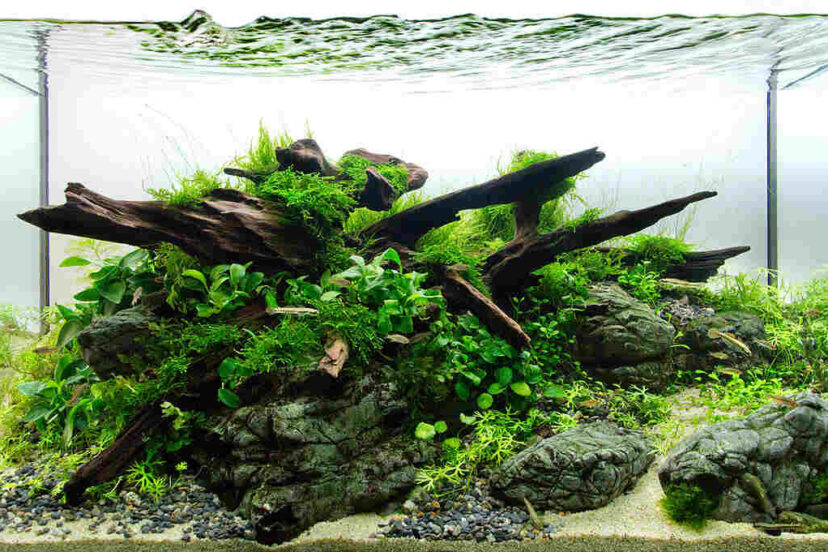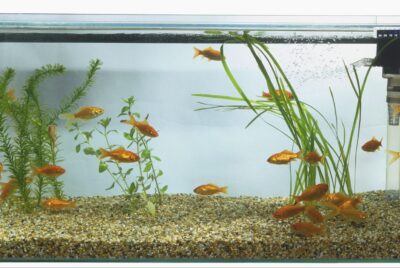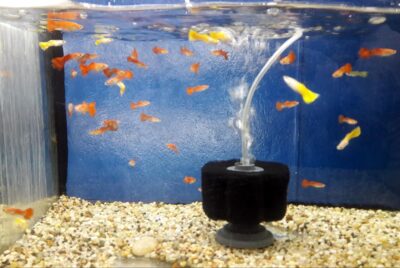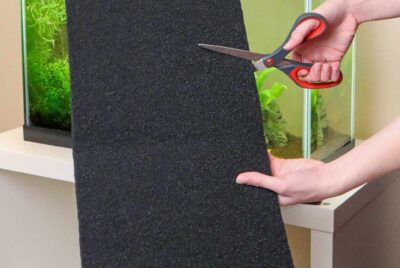Do Aquascapes Need Filters?
As an enthusiast and advisor in the fishkeeping community, I often come across the question, “Do aquascapes need filters?” It’s a valid concern for aquarists who are passionate about creating stunning underwater landscapes while maintaining a healthy environment for their aquatic pets. In this article, I will delve into the subject of aquascapes and provide helpful suggestions and reasons for the use of filters.
Introduction
Aquascaping is the art of creating beautiful and harmonious underwater landscapes within aquariums. It involves careful selection of aquatic plants, rocks, driftwood, and other decorative elements to mimic natural aquatic habitats. The goal is to create a visually appealing and tranquil environment for both the aquatic life and the observer.
Understanding Aquascapes
Before we explore the need for filters in aquascapes, let’s understand the fundamentals of this captivating hobby. Aquascapes can vary in size, complexity, and the types of fish and plants they house. Some aquascapes are simple and minimalist, while others are lush and densely planted. Understanding the unique characteristics of your aquascape is essential when considering filtration options.
Explaining Filtration Systems – (Do Aquascapes Need Filters)
Filtration systems play a vital role in maintaining the health and well-being of aquascapes. They are essential for creating a balanced and stable aquatic environment by removing physical debris, chemical impurities, and promoting the growth of beneficial bacteria. Let’s delve deeper into the different components and functions of filtration systems.
Aquarium filtration typically involves three main types of filtration: mechanical, chemical, and biological.
Mechanical Filtration
Mechanical filtration focuses on the physical removal of debris and particles from the water. It helps maintain water clarity and prevents the accumulation of visible waste materials. Mechanical filtration components, such as filter pads, sponges, and floss, trap and remove larger particles like uneaten food, fish waste, and plant matter.
When water passes through the mechanical filtration media, the particles become trapped, allowing the filtered water to pass through. Regular cleaning or replacement of the mechanical media is necessary to prevent clogging and maintain optimal filtration efficiency.
Chemical Filtration
Chemical filtration involves the use of specific media or substances to remove dissolved impurities and harmful substances from the water. Activated carbon, zeolite, and specialized resins are commonly used in chemical filtration.
Activated carbon is highly effective in adsorbing organic compounds, odors, and certain chemicals that can negatively impact water quality. It acts like a sponge, binding to these substances and removing them from the water. Zeolite is useful for removing ammonia, a toxic substance produced by fish waste and decaying matter. Specialized resins can target specific chemicals or impurities, such as heavy metals or phosphates.
Regular replacement of the chemical media is necessary to maintain its effectiveness. Over time, the media becomes saturated and loses its ability to adsorb impurities. It’s important to note that not all aquariums require chemical filtration, and its usage depends on the specific needs of the aquascape.
Biological Filtration
Biological filtration is perhaps the most crucial aspect of aquarium filtration systems. It involves the cultivation of beneficial bacteria that help break down harmful substances, such as ammonia and nitrites, into less harmful compounds like nitrates.
Beneficial bacteria colonize the surfaces of the aquarium, including filter media, substrate, and decorations. These bacteria convert ammonia, a highly toxic substance produced by fish waste and decaying matter, into nitrites. Another group of bacteria then converts nitrites into nitrates, which are less harmful to fish and plants.
To establish and maintain a healthy biological filtration system, it’s important to provide a suitable surface area for the bacteria to colonize. Porous filter media, such as ceramic rings or bio balls, provide ample surface area for bacteria growth. Regularly rinsing the filter media with aquarium water helps prevent the buildup of debris that can hinder bacterial colonization.
Maintaining stable water parameters, especially ammonia and nitrite levels, is essential for the well-being of the aquatic inhabitants. Regular testing of water parameters and proper cycling of new aquariums are crucial to establish a robust biological filtration system.
The Importance of Filtration Combination
In most cases, aquarium filtration systems incorporate all three types of filtration to ensure comprehensive water purification. The combination of mechanical, chemical, and biological filtration provides a multi-layered approach to maintaining water quality and promoting a healthy environment for the aquascape.
Mechanical filtration removes visible debris, chemical filtration addresses dissolved impurities, and biological filtration establishes a stable nitrogen cycle. The synergy between these filtration components helps create an optimal environment for fish and plants to thrive.
It’s important to note that the specific filtration requirements may vary depending on the size of the aquarium, the types of fish and plants present, and the desired level of maintenance. It’s crucial to choose the appropriate filtration system based on these factors and regularly monitor and maintain the filtration components to ensure their efficiency.
By understanding the different aspects of filtration systems, aquarists can make informed decisions regarding the selection and maintenance of filters for their aquascapes. A well-designed and properly functioning filtration system contributes significantly to the overall health, clarity, and longevity of the aquatic ecosystem.
Benefits of Using Filters
- Water Quality: Filters help maintain optimal water quality by removing harmful substances, such as ammonia and nitrites, which can be detrimental to the health of fish and plants.
- Waste Removal: Filters efficiently eliminate excess food, fish waste, and decaying organic matter from the aquascape, preventing a buildup of toxins and ensuring a clean and safe environment.
- Oxygenation and Circulation: Filters aid in oxygenation by facilitating water movement and surface agitation, promoting gas exchange and ensuring an adequate oxygen supply for aquatic life.
Considerations for Aquascapes without Filters
While filters offer numerous benefits, some aquascapes can thrive without traditional filtration systems. These setups require careful planning and attention to specific factors to ensure a healthy environment for aquatic life.
- Size and Complexity of Aquascape: Smaller aquascapes with minimal fish stocking and low bioload may maintain a natural balance without the need for filters. However, regular monitoring and maintenance are crucial to prevent imbalances.
- Types of Fish and Plants: Certain fish species, such as bettas or shrimp, thrive in low-flow environments. Additionally, densely planted aquascapes with robust plant growth can contribute to natural filtration by absorbing excess nutrients.
- Maintenance and Time Commitment: Aquascapes without filters demand diligent maintenance practices. Regular water changes, careful feeding, and monitoring water parameters become even more critical to ensure a stable and healthy ecosystem.
The Importance of Filtration – (Do Aquascapes Need Filters)
While some aquascapes can function without filters, it is generally advisable to incorporate filtration systems for the following reasons:
Water Quality and Balance
Filters play a vital role in maintaining water quality and balance in aquascapes. They remove harmful substances and help establish a stable nitrogen cycle, ensuring the well-being of the fish and plants within the aquarium.
Removal of Waste and Toxins
Filters efficiently remove physical debris, excess food, and fish waste, preventing the accumulation of toxic substances that could harm the aquatic inhabitants. They provide a crucial line of defense against ammonia spikes, nitrite poisoning, and other detrimental conditions.
Oxygenation and Circulation
Aquatic life relies on oxygen for survival, and filters aid in oxygenation by creating water movement and surface agitation. These processes promote gas exchange, preventing oxygen depletion and ensuring a healthy and vibrant environment.
Alternative Filtration Options
While traditional filters are commonly used in aquascapes, alternative filtration methods can also be considered, depending on the aquascape’s unique requirements.
Biological Filtration – (Do Aquascapes Need Filters)
In some cases, biological filtration alone can suffice. This involves establishing a well-balanced ecosystem within the aquascape, where beneficial bacteria break down toxins and maintain water quality. Regular water changes and diligent monitoring are essential for success with this approach.
Natural Aquascapes – (Do Aquascapes Need Filters)
Natural aquascapes emulate the dynamics of natural bodies of water. These setups rely on the interplay between plants, substrate, and aquatic life to achieve filtration and water quality control. Careful planning and knowledge of aquatic ecosystems are necessary for creating and maintaining a successful natural aquascape.
Plant-Based Filtration – (Do Aquascapes Need Filters)
Plants play a significant role in maintaining water quality by absorbing excess nutrients and providing oxygen through photosynthesis. Dense plant growth can act as a natural filter, effectively removing toxins and fostering a healthy environment.
Conclusion
In conclusion, while some aquascapes can thrive without filters, incorporating filtration systems is generally recommended to ensure optimal water quality, waste removal, and oxygenation. Filters offer various benefits, including maintaining a balanced ecosystem, removing toxins, and promoting the well-being of fish and plants. However, alternative filtration methods, such as biological filtration, natural aquascapes, and plant-based filtration, can be explored depending on the aquascape’s specific requirements. Remember to consider the size and complexity of your aquascape, the types of fish and plants present, and the time commitment involved in maintenance.
Frequently Asked Questions
Q: Can I create a small aquascape without a filter?
A: Yes, it is possible to create a small aquascape without a filter. However, diligent maintenance practices and careful monitoring of water parameters are crucial to maintaining a healthy environment for aquatic life.
Q: What are the benefits of using filters in aquascapes?
A: Filters help maintain optimal water quality, remove waste and toxins, and promote oxygenation and circulation in aquascapes. They contribute to a balanced ecosystem and provide a safer and healthier environment for fish and plants.
Q: Are there any alternatives to traditional filters in aquascapes?
A: Yes, alternative filtration methods can be considered, such as biological filtration, natural aquascapes, and plant-based filtration. These options can provide filtration and maintain water quality in specific aquascape setups.
Q: Can densely planted aquascapes act as natural filters?
A: Yes, densely planted aquascapes can effectively act as natural filters by absorbing excess nutrients and providing oxygen through photosynthesis. Dense plant growth contributes to water quality control and promotes a healthy environment.
Q: Do aquascapes without filters require more maintenance?
A: Aquascapes without filters demand diligent maintenance practices, including regular water changes, careful feeding, and monitoring of water parameters. Maintaining a stable and healthy environment requires more attention and effort in such setups.




